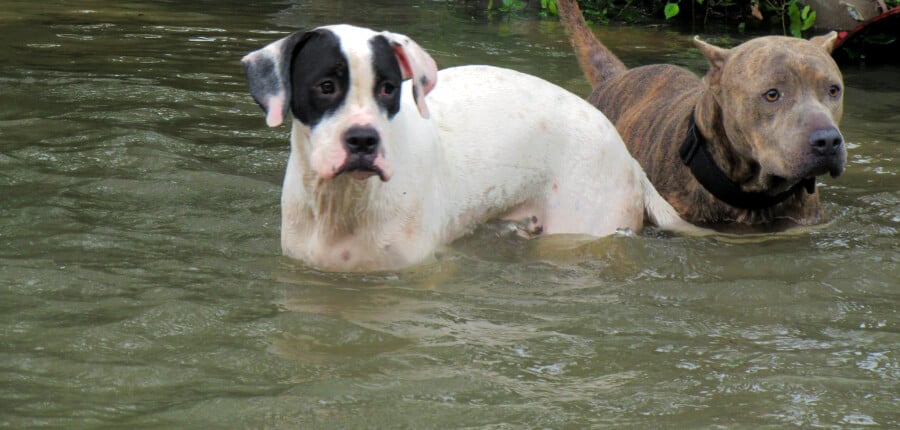It’s three o’clock in the morning and a piercing tone from your phone jolts you awake. Your heart pounds and your hands shake as the urgent message sinks in: A disaster is heading straight for your area, and it will hit within an hour. What should you do? Where should you go? Will your whole family—including your animal companions—make it through the emergency safely?
If you don’t know the answers to these questions, now is the time to prepare so that you’re ready when—not if—an emergency strikes. Your animal companions are even more vulnerable in a disaster than you are, so it’s vital to make arrangements now to ensure that they can handle whatever comes their way.
As Hurricane Ida recently reminded us, disasters can strike quickly. Ida formed and intensified very rapidly, giving residents little time to flee. Some had to gather their belongings and get on the road in a matter of hours.
- Creating an emergency “go bag” for each of your animal companions can save precious minutes in a crisis and ensure that essentials aren’t left behind. Assemble a kit that includes a carrier (for small animals) and/or a leash and harness. Pack bowls, towels, a favorite toy, a blanket, a litterbox and litter (for cats) and a week’s worth of food, bottled water and medications. Include photographs of yourself with each of your animals to aid in identification in case you become separated.
- Some emergencies—tornadoes, blizzards, chemical spills and pandemics, for example—may require you to shelter in place, rather than make a swift exit. Ensure that you’re ready to ride out two weeks at home with your animals—possibly without any water, electricity or heat—by creating a “stay kit.” Since this kit stays in your home, it can be larger and more elaborate than your go bag. Sealable plastic totes work well for keeping everything contained and dry. In addition to the necessities mentioned above, consider adding an animal first aid kit, grooming supplies (such as brushes and shampoo), sanitation items to clean up after your animal, treats, chew toys and calming aids such as Feliway spray (for cats) and a ThunderShirt (for dogs). Periodically rotate the food and medications so they don’t expire.
- Just as vital as packing supplies is knowing where you’ll go with your animals if you must leave your home. Map out possible routes in different directions so you have multiple options for leaving quickly, but always follow recommended evacuation routes, as shortcuts may be blocked or dangerous. Ensure that your animals are microchipped and wear collars with current identification tags. Since many emergency shelters do not allow animals, find out in advance where you and your animals can stay. Many hotel chains waive “no animals” policies during emergencies. Campgrounds and the homes of friends and family members are other options (be sure to offer to return the favor for your hosts).
- Whatever you do, never leave your animals behind in an evacuation. Not only is it terrifying for them, it can be deadly. PETA’s rescue teams have found animals up to their necks in water, trapped in crates inside flooded homes. Dogs who are left chained outdoors have no escape from flying debris, and if the area floods, they may be forced to tread water until they drown. If you truly have no choice but to evacuate without your animals, never leave them tied up or confined to crates, pens or hutches. Give them a chance at survival by leaving them indoors on upper floors if flooding is expected. Provide at least a 10-day supply of dry food, and fill sinks, bathtubs and large tip-proof containers with drinking water. Put signs on windows and doors indicating the number and species of animals inside, as rescue workers may be able to save them.
No one wants to be confronted with an emergency at 3 a.m. (or any time, for that matter). But planning now will help you sleep better, knowing that you’re ready to help your animal companions weather any storm.





